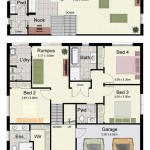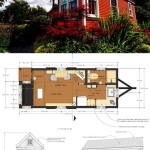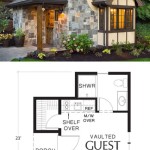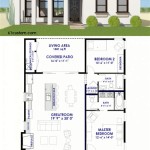Creating Your Own House Plans entails the process of designing and drafting blueprints for your dream home. It involves visualizing the layout, size, style, and functionality of the house you envision. By engaging in this process, you take on the role of an architect, customizing every aspect of your living space to suit your unique needs and preferences.
The benefits of creating your own house plans are multifaceted. Firstly, it grants you complete control over the design, ensuring that every detail reflects your personal style and aspirations. Secondly, it allows for cost savings compared to hiring an architect, empowering you to allocate your budget more efficiently. Moreover, it fosters a sense of accomplishment and pride as you witness your vision come to fruition.
Transitioning to the main body of this article, we will delve deeper into the steps involved in creating your own house plans. From conceptualizing the design to drafting the blueprints, each stage will be thoroughly examined to provide you with the essential knowledge and tools for embarking on this rewarding journey.
Creating your own house plans is an empowering journey that requires careful consideration of various factors. Here are 10 important points to keep in mind:
- Define your needs and wants
- Research different home styles
- Consider your budget and timeline
- Learn basic architectural principles
- Use design software or hire a draftsperson
- Pay attention to room flow and functionality
- Include energy-efficient features
- Get feedback from family and friends
- Obtain building permits and approvals
- Enjoy the process and make it your own
By following these points, you can create house plans that perfectly suit your needs and aspirations.
Define your needs and wants
The first and most important step in creating your own house plans is to define your needs and wants. This involves carefully considering how you and your family will use the space, both now and in the future. Some key questions to ask yourself include:
- How many bedrooms and bathrooms do you need?
- What kind of living spaces do you want, such as a formal living room, family room, or home office?
- Do you need any special features, such as a home gym, pool, or outdoor kitchen?
- What is your budget for the project?
- What is your desired timeline for completing the project?
Once you have a good understanding of your needs and wants, you can start to develop a floor plan that meets your requirements. It is important to be realistic about your needs and wants, and to make compromises where necessary. For example, if you have a limited budget, you may need to choose a smaller home or forego some of the special features you would like.
It is also important to consider your lifestyle when defining your needs and wants. For example, if you like to entertain guests, you may want to include a large living room and dining room in your plans. If you have young children, you may want to include a playroom or mudroom in your plans.
By taking the time to define your needs and wants, you can create a house plan that is tailored to your specific lifestyle and requirements.
Research different home styles
Once you have a good understanding of your needs and wants, you can start to research different home styles to find one that suits your taste and lifestyle. There are many different home styles to choose from, each with its own unique characteristics. Some of the most popular home styles include:
Traditional: Traditional homes are typically symmetrical with a pitched roof and a front porch. They often have a formal living room and dining room, as well as a family room and kitchen. Traditional homes are known for their timeless appeal and classic beauty.
Contemporary: Contemporary homes are characterized by their clean lines and open floor plans. They often have large windows and doors that let in natural light. Contemporary homes are known for their sleek and modern look.
Craftsman: Craftsman homes are known for their natural materials and handcrafted details. They often have exposed beams, stone fireplaces, and built-in cabinetry. Craftsman homes are known for their warm and inviting atmosphere.
Ranch: Ranch homes are typically single-story homes with a long, low profile. They often have a large living room and kitchen, as well as several bedrooms and bathrooms. Ranch homes are known for their casual and comfortable style.
Cottage: Cottage homes are typically small and cozy, with a pitched roof and a front porch. They often have a charming and rustic look. Cottage homes are known for their quaint and inviting atmosphere.
Once you have researched different home styles, you can start to narrow down your choices based on your needs and wants. It is important to find a home style that you love and that will suit your lifestyle.
Consider your budget and timeline
Once you have defined your needs and wants and researched different home styles, it is important to consider your budget and timeline for the project. Creating your own house plans can save you money compared to hiring an architect, but it is important to be realistic about the costs involved. You will need to factor in the cost of materials, labor, and permits.
- Estimate the cost of materials: The cost of materials will vary depending on the size and complexity of your home. You can get quotes from local suppliers to get an idea of the costs involved.
- Factor in the cost of labor: If you are not planning to build your home yourself, you will need to factor in the cost of labor. The cost of labor will vary depending on the location and the complexity of the project.
- Get quotes for permits: You will need to obtain building permits before you can start construction. The cost of permits will vary depending on the location and the size of your home.
- Set a realistic timeline: It is important to set a realistic timeline for your project. This will help you to stay on track and avoid delays. The timeline will depend on the size and complexity of your home, as well as the availability of materials and labor.
Once you have considered your budget and timeline, you can start to develop your house plans. It is important to be realistic about what you can accomplish within your budget and timeline. If you are not sure how to proceed, you can consult with a professional home builder or architect.
Learn basic architectural principles
Before you start creating your own house plans, it is important to learn some basic architectural principles. This will help you to understand how to design a home that is both functional and beautiful.
- Understand the basics of structural engineering: This will help you to design a home that is safe and strong. You need to understand how to calculate loads and stresses, and how to choose the right materials for your home.
- Learn about different types of building materials: There are many different types of building materials available, each with its own advantages and disadvantages. You need to understand the properties of different materials so that you can choose the right ones for your home.
- Study different home designs: There are many different home designs to choose from. You need to study different designs to get ideas for your own home. You can find inspiration in books, magazines, and online.
- Learn about building codes: Building codes are regulations that govern the construction of homes. You need to be familiar with the building codes in your area so that you can design a home that meets all of the requirements.
Learning basic architectural principles will help you to create a home that is both functional and beautiful. It will also help you to avoid costly mistakes during the construction process.
Use design software or hire a draftsperson
Once you have a good understanding of basic architectural principles, you can start to create your own house plans. You can use design software or hire a draftsperson to help you with this process.
- Use design software: There are many different design software programs available that can help you to create your own house plans. These programs can be easy to use, even for beginners. They allow you to create a virtual model of your home, which you can then view from different angles and perspectives. This can be very helpful in visualizing your design and making changes as needed.
Some popular design software programs include:
- SketchUp
- Floorplanner
- Home Designer Pro
- Chief Architect
If you are not sure which design software program to use, you can read reviews online or talk to other homeowners who have used these programs.
- Hire a draftsperson: If you are not comfortable using design software, or if you have a complex home design in mind, you can hire a draftsperson to create your house plans. Draftspersons are trained professionals who can help you to create accurate and detailed plans that meet all of the building codes in your area.
When hiring a draftsperson, it is important to interview several different candidates and to check their references. You should also make sure that the draftsperson is familiar with the type of home you want to build.
Whether you choose to use design software or hire a draftsperson, it is important to have a clear idea of what you want before you start creating your house plans. This will help to ensure that your plans are accurate and complete.
Pay attention to room flow and functionality
When creating your own house plans, it is important to pay attention to room flow and functionality. This means that you need to think about how people will move through the space and how they will use each room. You also need to consider the placement of furniture and other objects in each room.
- Create a logical flow between rooms: The flow of your home should be logical and easy to navigate. You should be able to move from one room to another without having to backtrack or go through unnecessary spaces. For example, the kitchen should be located near the dining room, and the bedrooms should be located near the bathrooms.
- Design rooms for their intended purpose: Each room in your home should be designed for a specific purpose. For example, the living room should be designed for relaxing and entertaining, while the kitchen should be designed for cooking and eating. You should also consider the size and shape of each room when designing it. For example, a large family room may need to be divided into different zones, such as a seating area and a play area.
- Place furniture and objects strategically: The placement of furniture and other objects in each room can have a big impact on the flow and functionality of the space. For example, you should avoid placing furniture in the middle of a walkway, and you should make sure that there is enough space around each piece of furniture to move around comfortably.
- Consider the natural flow of light: The natural flow of light can also affect the flow and functionality of your home. You should try to design your home so that it takes advantage of natural light. For example, you can place windows in areas where you want to create a bright and airy atmosphere, and you can use skylights to bring light into darker areas.
By paying attention to room flow and functionality, you can create a home that is both beautiful and comfortable to live in.
Include energy-efficient features
Including energy-efficient features in your home can save you money on your energy bills and help to reduce your environmental impact. There are many different energy-efficient features that you can incorporate into your home, including:
- Insulation: Insulation helps to keep your home warm in the winter and cool in the summer. It can be installed in your walls, ceiling, and floor. There are many different types of insulation available, so you should choose one that is appropriate for your climate and budget.
Benefits of insulation:
- Reduced energy bills
- Increased comfort
- Reduced environmental impact
- Energy-efficient windows: Energy-efficient windows are designed to keep heat in during the winter and out during the summer. They are typically made with double or triple glazing, and they may have a special coating that reflects heat. Energy-efficient windows can significantly reduce your energy bills, especially if you live in a climate with extreme temperatures.
Benefits of energy-efficient windows:
- Reduced energy bills
- Increased comfort
- Reduced fading of furniture and fabrics
- Energy-efficient appliances: Energy-efficient appliances use less energy than traditional appliances. They are typically more expensive to purchase, but they can save you money on your energy bills over time. When purchasing appliances, look for the Energy Star label. Energy Star appliances meet strict energy-efficiency standards set by the U.S. Environmental Protection Agency.
Benefits of energy-efficient appliances:
- Reduced energy bills
- Reduced environmental impact
- Renewable energy sources: Renewable energy sources, such as solar panels and wind turbines, can be used to generate electricity for your home. This can significantly reduce your reliance on fossil fuels and help you to save money on your energy bills.
Benefits of renewable energy sources:
- Reduced energy bills
- Reduced environmental impact
- Increased energy independence
Including energy-efficient features in your home is a great way to save money, reduce your environmental impact, and increase your comfort. When creating your house plans, be sure to consider the energy efficiency of your home and incorporate as many energy-efficient features as possible.
Get feedback from family and friends
Once you have created a draft of your house plans, it is important to get feedback from family and friends. This can help you to identify any areas that need improvement and to make sure that your plans are realistic and achievable.
When asking for feedback, be specific about what you are looking for. For example, you might ask your family and friends to comment on the overall layout of your home, the size and shape of the rooms, or the placement of windows and doors. You might also ask them to provide feedback on specific features of your home, such as the kitchen or bathroom.
It is important to be open to constructive criticism. Your family and friends may have some great ideas that you had not thought of. Be willing to make changes to your plans based on their feedback, but ultimately the decision of what to include in your home is up to you.
Getting feedback from family and friends can be a valuable part of the home design process. It can help you to create a home that is both beautiful and functional, and that meets the needs of your family and lifestyle.
Once you have received feedback from family and friends, you can make any necessary changes to your house plans. Once you are satisfied with your plans, you can start the process of building your dream home.
Obtain building permits and approvals
Once you have finalized your house plans, you will need to obtain building permits and approvals from your local building department. This process can vary depending on your location, but there are some general steps that you can follow:
1. Submit your plans to the building department: You will need to submit your house plans, along with a completed application form, to the building department. The building department will review your plans to make sure that they meet all of the building codes in your area.
2. Pay the required fees: You will need to pay a fee to the building department for reviewing your plans. The fee will vary depending on the size and complexity of your project.
3. Make any necessary changes to your plans: The building department may require you to make changes to your plans before they can be approved. These changes may be related to the structural integrity of your home, the placement of windows and doors, or the type of materials that you are using.
4. Obtain a building permit: Once the building department has approved your plans, they will issue you a building permit. This permit will allow you to start construction on your home.
It is important to note that building permits and approvals can take some time to obtain. You should start the process as early as possible to avoid any delays in your construction schedule.
Enjoy the process and make it your own
Creating your own house plans can be a challenging but rewarding experience. It is important to enjoy the process and to make your plans your own. Here are a few tips:
- Don’t be afraid to experiment: There are no rules when it comes to creating your own house plans. Don’t be afraid to experiment with different layouts, designs, and materials. The more you experiment, the more likely you are to come up with a plan that is unique and personal to you.
- Personalize your plans: Your house should reflect your personality and lifestyle. Don’t be afraid to add personal touches to your plans, such as a custom-designed kitchen or a home theater. The more you personalize your plans, the more you will enjoy your home.
- Don’t be afraid to ask for help: If you are struggling with your house plans, don’t be afraid to ask for help from a friend, family member, or professional. A fresh perspective can often help you to overcome challenges and to come up with new ideas.
- Have fun: Creating your own house plans should be a fun and enjoyable experience. Don’t take it too seriously and don’t be afraid to make mistakes. The most important thing is to create a plan that you are happy with.
By following these tips, you can enjoy the process of creating your own house plans and make your dream home a reality.










Related Posts








